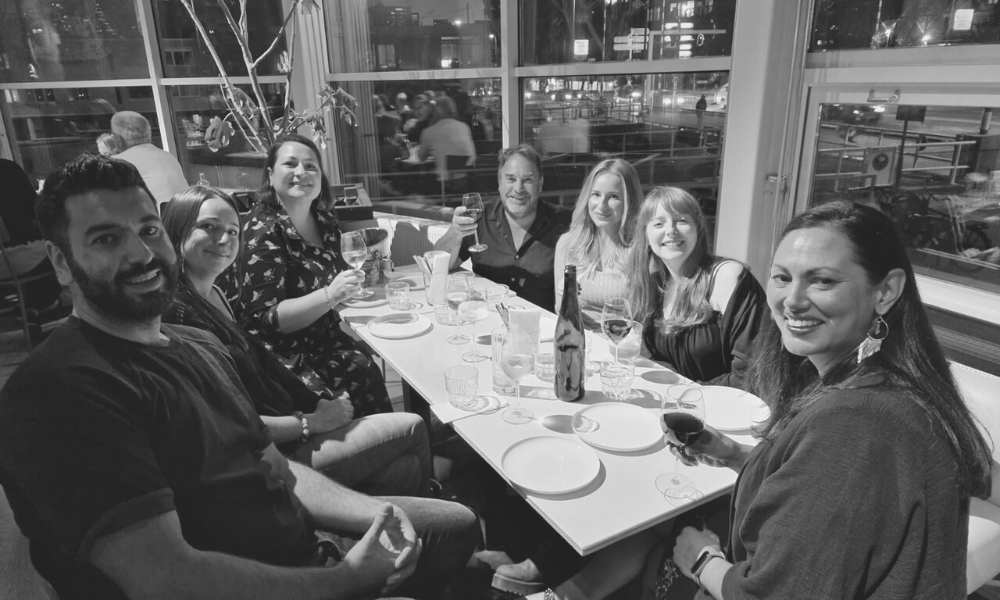We do things differently at Midnight and we love broadening our horizons. That’s why we picked Rotterdam for our annual weekend away. Most of you will have visited its big brother Amsterdam – and it’s nothing like that…
We do things differently at Midnight and we love broadening our horizons.
That’s why we picked Rotterdam for our annual weekend away. Most of you will have visited its big brother Amsterdam – and it’s nothing like that. In fact, we’re not sure there’s a city that’s quite like Rotterdam anywhere in Europe.
Rotterdam’s historic city centre with its Dutch gabled style houses and canals was razed to the ground by the Germans during World War II. As a result, there was very little of the old city left. When faced with this choice other cities in Europe such as Warsaw or Dresden decided to rebuild so that its city centre resembled the historic buildings that were there before.
Rotterdam chose a different path and the results are equally beautiful and breath-taking as its counterparts in Poland and Germany, but represent a modern expression which surely rivals the space-age beauty of Calatrava’s City of Arts and Sciences in Valencia.
Here’s our run down of our top five favourite architectural finds in Rotterdam, with thanks to our guide Niels from Viator who shed light on the history and rebirth of Rotterdam in this modern day and age, which today boasts 180 different nationalities and an impressive collection of street art.
Station Kapsalon
Rotterdam’s central station underwent a complete makeover and was fully reopened in 2014.
The metal rooftop, partly covered with solar panels, earned the station the nickname “Station Kapsalon” (referring to Rotterdam’s popular takeaway dish which is served in a metal tin).
Its two key features are a shed over the platforms and a scissor of concrete vaulting over the waiting area and transfer point, showing that a train station is really about two things – waiting for a train and arriving in the city or leaving it. The first requires lots of space and ease of access, while the second needs to generate excitement. It achieves both in stereo.

De Markthal
The standout element of this incredible building are the ceilings. Like Rotterdam’s answer to the Sistine Chapel, this temple to food boasts mushroom domed interiors painted with murals sporting giant flying fruits, flowers, and insects.
The artwork Horn of Plenty was created by the artists Arno Coenen and Iris Roskam and is one of the biggest in the world, covering an area of about 11,000 square meters.
The building was opened in 2014 and is a home to around a hundred food stalls, shops and restaurants, as well as apartments.
In fact, it sits near the site where Rotterdam was first founded in 1270 and was designed to circumvent stricter EU regulations about selling meat, fish, and cheese in the open air, as well as the growing housing shortage in Rotterdam. Necessity as ever is the mother of invention.

Kijk-Kubus
Like Brighton’s Upside Down House on steroids, Kijk-Kubus or Cube Houses, were designed to pull in a crowd.
They are also meant to represent an urban woodland setting. However, they did leave us puzzled and intrigued about what it’s like to live in these and how on earth you furnish them!
Designed by Dutch architect Piet Blom in the 1970s, this residential development features homes where the cubes are tilted over by 45 degrees.
Today they’re one of the city’s most popular attractions and you can even visit the Show Cube Museum to find out what it’s like to live in a place where the walls are slanted.

Erasmus Bridge
Nicknamed the Swan, this bridge was built in 1996 and stretches over the river Maas, connecting the city centre with the neighbourhood of Kop van Zuid.
The Erasmus Bridge was officially named after the city’s famous scholar Erasmus and at 808 metres long weighs the equivalent of 1,700 adult elephants.
Make sure you catch a glimpse of this delight when it’s illuminated at night too. It’s simply stunning.

Erasmus Bridge
Nicknamed the Swan, this bridge was built in 1996 and stretches over the river Maas, connecting the city centre with the neighbourhood of Kop van Zuid.
The Erasmus Bridge was officially named after the city’s famous scholar Erasmus and at 808 metres long weighs the equivalent of 1,700 adult elephants.
Make sure you catch a glimpse of this delight when it’s illuminated at night too. It’s simply stunning.




